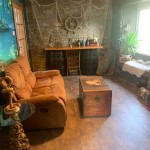Sensory Room Decor: Creating a Calming and Stimulating Environment
Sensory rooms are specialized spaces designed to provide a controlled and therapeutic environment for individuals with sensory processing disorders or other sensory sensitivities. The decor of these rooms plays a vital role in creating a calming, stimulating, or engaging atmosphere that supports sensory regulation and development.
When designing a sensory room, consider the following key elements:
Visual Elements
The choice of colors, patterns, and lighting can significantly impact the sensory experience. Soft, calming colors like blue, green, or purple can promote relaxation, while brighter colors like yellow or orange can stimulate alertness. Patterns can create visual interest and stimulation, but avoid overwhelming the senses with too many complex or intricate designs.
Natural lighting is ideal, but artificial lighting should be dimmable and adjustable to accommodate different sensory needs. Avoid harsh or flickering lights, which can be irritating to some.
Tactile Elements
Incorporate a variety of textures and materials to provide tactile stimulation. Soft fabrics, plush cushions, and textured surfaces can be calming and inviting. Smooth, hard surfaces like metal or glass can provide cooling or stimulation. Different materials, such as sand, water, or playdough, allow for sensory exploration and fidgeting.
Auditory Elements
Sound can have a powerful effect on sensory processing. A quiet, calm room with minimal background noise can provide a calming environment. Music, nature sounds, or white noise can be used to create a soothing or stimulating atmosphere. Consider installing speakers or headphones for controlled auditory input.
Olfactory Elements
Scents can also trigger sensory responses. Use calming scents like lavender or chamomile to promote relaxation or stimulating scents like citrus or peppermint to enhance alertness. Avoid strong or overwhelming odors that can be irritating.
Incorporate scent diffusers or scented candles to disperse the desired aromas throughout the room.
Other Sensory Considerations
Consider additional sensory elements such as:
- Proprioception: Equipment like weighted blankets, bean bags, or trampolines provide deep pressure input and enhance body awareness.
- Vestibular: Swinging, rocking, or spinning activities stimulate the vestibular system and can provide calming or alerting effects.
- Oral: Chew toys, fidgets, or edible sensory materials can provide oral stimulation and help regulate sensory input.
It's important to consult with a sensory therapist or occupational therapist to determine the specific sensory needs of the individuals using the sensory room and design a space that best meets their requirements.
Conclusion
Creating a sensory room with appropriate decor requires a thoughtful and holistic approach. By considering the visual, tactile, auditory, olfactory, and other sensory needs, it's possible to create a space that supports sensory regulation, development, and overall well-being.

Pin On Sensory Rooms

Sensory Room Ideas Sentire The Toy

30 Must Try Sensory Room Ideas For Classrooms

Sensory Room Ideas For Children With Autism Pediaplex

34 Sensory Room Ideas To Calm Kids Down On A Budget

How To Build A Sensory Room Southpaw

30 Must Try Sensory Room Ideas For Classrooms

Multi Sensory Room Equipment Environment Design Sensoryone

How To Make A Sensory Room At Home Playroom

Sensory Board Kids Room Decor Montessori Developing Panel Polska







